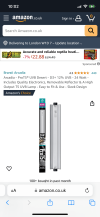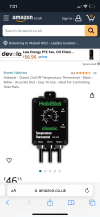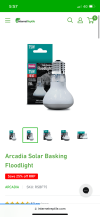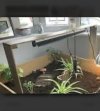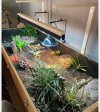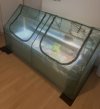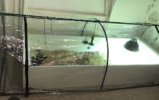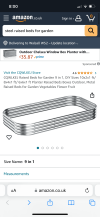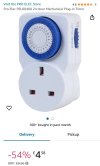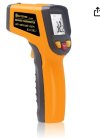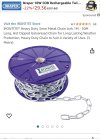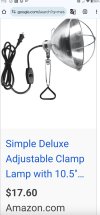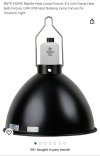Please help! I’m new here had my little Eric (Horsefield Tortoise) for 2 nights. The reptile shop said that he is one year old.
I’ve bought a pre done viv from the pet shop and currently I have a basking light which they have advised 31 degrees in the day with the uv light strip on and 27 degrees at night with the uv light off, from a lot of places I’ve read that they are meant to have a dark viv at night time so they can sleep but despite this light being on a dimmable thermostat it is staying very bright at night. I’ve spoke to the pet shop and he said the bulb needs to adjust and it will lower light over time, I think that sounds a little silly. What do you all advise I just want something easy? Will I have to change between a day bulb and a night bulb? Thanks in advance! Here’s some pictures of the set up. First picture is night and second picture is day.
I’ve bought a pre done viv from the pet shop and currently I have a basking light which they have advised 31 degrees in the day with the uv light strip on and 27 degrees at night with the uv light off, from a lot of places I’ve read that they are meant to have a dark viv at night time so they can sleep but despite this light being on a dimmable thermostat it is staying very bright at night. I’ve spoke to the pet shop and he said the bulb needs to adjust and it will lower light over time, I think that sounds a little silly. What do you all advise I just want something easy? Will I have to change between a day bulb and a night bulb? Thanks in advance! Here’s some pictures of the set up. First picture is night and second picture is day.



